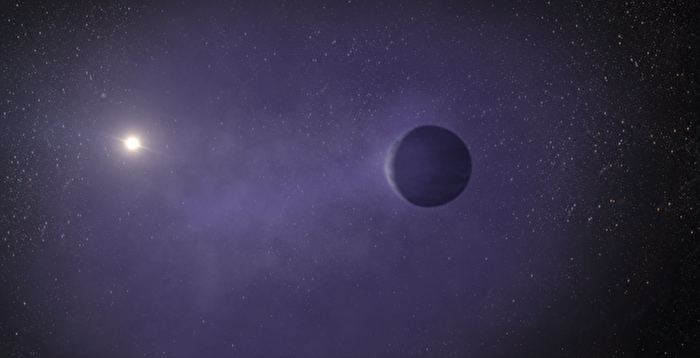[Epoch Times, February 11, 2022](The Epoch Times reporter Di Rui compiled and reported) For the first time, astronomers have observed two Neptune-like exoplanets are losing their thick outer atmospheres and are about to become ‘super-Earths’ type of exoplanet.
Since scientists observed the first exoplanet in the mid-1990s, thousands have been discovered so far. Most of the planets with rocky surfaces are of two types.
The volume of one type is 2 to 4 times that of the earth, and the other type is 1.6 to 1.75 times that of the earth. Scientists call the former “mini-Neptune” and the latter “super-Earth”. The volume of Neptune in the solar system is about 4 times that of the earth. Those exoplanets are slightly smaller and denser than Neptune, so they are called “mini-Neptunes”.
“Many astronomers have speculated that the atmospheres of those young mini-Neptunes must have volatilized, but never before that,” said California Institute of Technology graduate Michael Zhang, lead author of the new study. Planets in the process were observed.”
This time, researchers found two mini-Neptunes that are losing their atmospheres from Hubble data. One is the planet HD 63433c around the star HD 63433 in the constellation Gemini, 73 light-years from Earth; the other is the planet TOI-560b around the star TOI-560 in the constellation Hydra, 103 light-years away. The findings were written into two studies, published February 1 in The Astronomical Journal.
Mini-Neptunes have thick atmospheres. HD 63433c’s atmosphere is at least 12 times thicker than the radius of its rocky inner core; TOI-560b’s atmosphere is at least 3.5 times thicker than its rocky core radius.
Baked by stellar radiation, the atmospheres of the two planets are volatilizing, “like vapor from a pot of boiling water,” according to a NASA press release.
Observational data show that hydrogen gas near HD 63433c is escaping at a speed of 50 kilometers per second; while helium gas near TOI-560b is escaping at a speed of 20 kilometers per second. “The gravitational force of these mini-Neptunes is not strong enough to hold gas moving at such high speeds,” said Michael Zhang.
This means that the two mini-Neptunes will become two super-Earths. The researchers speculate that the discovery may explain why most of the rocky exoplanets commonly seen are of the two aforementioned types.
One of the surprising findings was that gas escaping from TOI-560b was flowing toward its star, TOI-560. This is the opposite of the scientists’ previous analysis. Astronomers previously thought that atmospheres escaping from planets would travel farther from their stars.
“As exoplanet researchers, we’ve learned to expect the unexpected,” said Caltech professor Heather Knutson. The researchers say they need to observe more of these leaking mini-Neptunes , to understand whether the escape of the atmosphere to the star is a general rule or a rare case.
“These strange alien worlds continue to surprise us with physical phenomena that are not observed in our solar system,” Knudsen said.
Responsible editor: Ye Ziwei#
